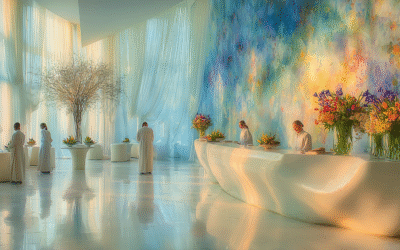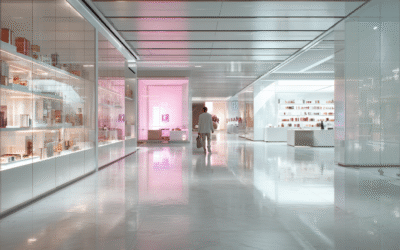Going on Sale is generally not an option with Travel Retail. Specials sure but not having a sale. Landlords will rarely let you do it because it downgrades the entire look of the airport or precinct. That however doesn’t mean the principle of Sales can’t be applied or don’t apply.
See previous post on the Psychology of Sales
 Fear
Fear
Fear plays quite a role in travel retail. People worry that if they don’t get something when they see it that it won’t be available later in their trip. If its a pre-planned purchase then fear plays even more of a role, particularly when its a gift for someone else.
Tourists purchase souvenirs & gifts in town rather than the airport when they’re leaving because they’re not 100% sure it will be available at the airport or what the price will be. Local travellers often purchase investment items (such as cameras & technology) before the airport because they are fearful or uncertain whether the airport stocks it or indeed will have it in stock when they get there.
Emotional Investment
Emotional Investment is a difficult one to tap into in a travel retail environment, particularly an airport, because there is really no investment of time & energy as its filling in time. The emotional investment therefore needs to relate to the person a gift is being purchased for or the holiday itself. The easiest way to do this is to create a story around the product which has emotional hooks – something which adds value to the item because when it is then given its not just a gift but an entire experience/story which communicates the level of emotional investment the person had in choosing that item.
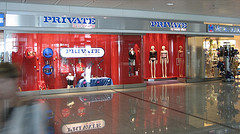 I might add this is the same technique men should use in purchasing products for women. If you just purchase something and give it to them of course they will be happy. However if you give it to them with a story about how the ring was designed, the meaning of the stone, the background of the jeweller or even the lovely sales assistant who spent hours helping you find it – well then it communicates to her that you put a great deal of effort into your choice & into buying it for her. Then her happiness turns to delight. Indeed as a tip for blokes this is also a way of saving money because for most women a gift chosen with a compelling emotional story is worth significantly more than its cash value and normally they wouldn’t even consider thinking about what it cost you – not when you’ve shown so much care.
I might add this is the same technique men should use in purchasing products for women. If you just purchase something and give it to them of course they will be happy. However if you give it to them with a story about how the ring was designed, the meaning of the stone, the background of the jeweller or even the lovely sales assistant who spent hours helping you find it – well then it communicates to her that you put a great deal of effort into your choice & into buying it for her. Then her happiness turns to delight. Indeed as a tip for blokes this is also a way of saving money because for most women a gift chosen with a compelling emotional story is worth significantly more than its cash value and normally they wouldn’t even consider thinking about what it cost you – not when you’ve shown so much care.
Competition
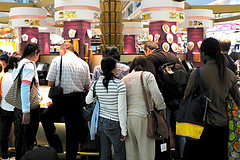 Within travel retail the sense of competition relates basically to traffic & product volume. The more people in a store and the less of the product on display at any one time creates a sense of competition. Of course you can’t understock and in travel retail which is very peaky its sometimes difficult to get the balance. The point perhaps to recognise is that product volume on display plays to two different emotional states. If there isn’t much there it sends the message of scarcity which can stimulate that sense of competition providing the store has high traffic flow. If however the store has low traffic flow then it sends the message of exclusivity or prestige – which is contrary to a low price proposition.
Within travel retail the sense of competition relates basically to traffic & product volume. The more people in a store and the less of the product on display at any one time creates a sense of competition. Of course you can’t understock and in travel retail which is very peaky its sometimes difficult to get the balance. The point perhaps to recognise is that product volume on display plays to two different emotional states. If there isn’t much there it sends the message of scarcity which can stimulate that sense of competition providing the store has high traffic flow. If however the store has low traffic flow then it sends the message of exclusivity or prestige – which is contrary to a low price proposition.
Therefore you have to think very carefully about using a technique of scarcity to stimulate a sense of competition as it could backfire dreadfully on your price perception.
Assumed Value
Assumed value is a big player in travel retail and nowhere is it seen more than in Duty Free. The simple reality of the matter is that for many products, Duty Free isn’t cheaper than downtown prices when they’re on sale. Sure its cheaper than normal downtown prices but with the exception of Alcohol & Tobacco & possibly perfume, in Australia at least its normally possible to find similar prices if you’re prepared to wait. In many other countries (particularly UK/Europe) its rarely much cheaper for anything.
However, when we’re travelling its an excuse to buy. We want to believe its cheaper, because we want to buy it. Travel retail has the capacity to capture pent up demand, things you’ve wanted but have put off purchasing – but you’re on holidays now and it must be cheaper so I’ll get it.
If Duty Free has this built in set of blinkers then what about other retail in the airport? Unfortunately its less common that people see it as cheaper or “a bargain”, in fact quite often they perceive the reverse. Thats unfortunate because in reality, for Australia at least, those other products most likely are cheaper at the airport. Perhaps not lower end products but certainly many of the luxury items where the 10% GST saving more than offsetts any increase in occupancy cost.
How to change that perceptions? Well a lot of it actually comes down to a few key anchor products which people tend to use for price perception setting. There aren’t that many of them and no, I’m not going to give them all away here. But I will tell you that coffee is one of the most important. Most people know roughly how much a cup of coffee costs, they buy one fairly often and know the basic range of prices from “cheap” to “expensive”. So when they find coffee at the airport running at $5 a cup they transfer this “expensive” perception to other product and this starts to impact significantly on the assumed value of speciality retail.
If I could give one tip to airports it would be to price constrain coffee to being at or below mid-range CBD prices or roughly equivilent to what you’d pay in a shopping centre. Even if that means foregoing a little bit of revenue on the lucrative coffee concessions you will make it up with the other retail offerings.
As for what the other items are – well think through it yourself and think about what products you know the price of and when you’ve thought something was expensive. You’ll probably guess half of them.
Easy Shopping
This is an aspect of shopping which travel retail often does poorly at. There is a tendency to believe that more options are better, after all you’re appealing to people from lots of different cultures.
There is also a belief amongst some that if travellers see a number of different outlets in the same category that they will believe there is more competition and hence better prices. Whilst this does work in some categories, where it tends not to work is for pre-planned purchases such as core duty free. If someone has decided they want to buy their cigarettes, a bottle of scotch & the pair of Gucci sunglasses they saw last week at the shopping centre, then odds are they’re going to buy them. Put more duty free stores in, particularly if you’re also running price guarantees which many airports do, then all you’re doing is chewing up shopping time and making the whole process more complicated for travellers.
When they’re seeing the same products time after time, all at roughly the same price or miniscual differences, all that happens is that it a) starts to make them think the prices are fixed and hence maybe not that much of a deal b) they start to look for differences which aren’t there, make the process longer and confuses them and c) particularly if there’s a man present in the shopping mix, frequently ends in up a “forget it” or “we’ll wait to see what’s at X airport” because you’ve all of a sudden opened up the thinking that this product is easily available.
And importantly for men’s products in travel retail, don’t give them too many different options (unless you’re selling power tools of course then the more choices the better 🙂 ).
Saving not Spending
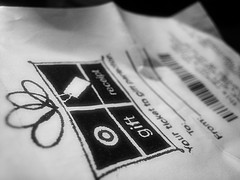 Duty Free often do this well but other travel retail not so much. The point in stimulating the emotional sense that we’re saving money not spending it relates to emphasising in some tangible (or at least plausible) way what their savings are in buying now and here.
Duty Free often do this well but other travel retail not so much. The point in stimulating the emotional sense that we’re saving money not spending it relates to emphasising in some tangible (or at least plausible) way what their savings are in buying now and here.
There are also some quick tricks to emphasise this within the likes of an airport where airside product is sold tax free – even something simple like putting GST/Tax saved at the bottom of the receipt. A test of exactly this approach in one airport resulted in an uplift across the board in retail (ex F&B) of just under 8%.
Images :
http://www.flickr.com/photos/jimmyharris/
http://www.flickr.com/photos/16543356@N00/

